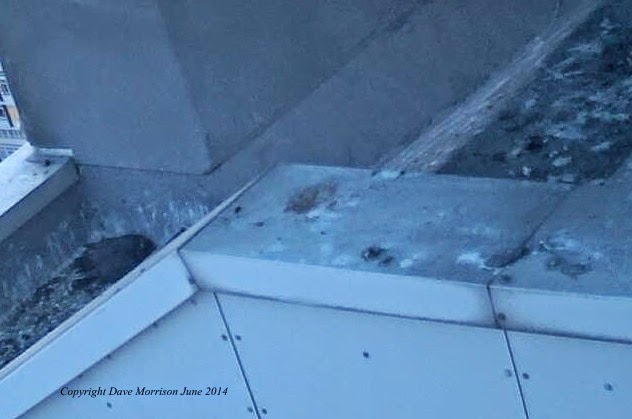Its fair to say that the last few weeks have been manic, the now seemingly annual earlier fledging times have spread it out but it is hard covering a lot of sites.
The problem comes from the fact that the sites must remain undisclosed, a majority anyway, with increasing pairs how do you cover them all at fledging time?
It’s getting to the point with the numbers where I am questioning fledging time; do the undoubted risks in an urban site out way the non disclosure in publicising it?
There is no doubt that each site at breeding time needs a nucleus of local people involved to cover the grounding issue but how can people get involved if they don’t know there are breeding peregrines on their doorsteps?
To cover a site at fledging time you need a number of people involved, the more the merrier, each group can do a few hours each day and then another couple or group takes over. The site is then covered for a number of days, up to a week at times during staggered fledging usually beginning with the males.
If a few people or a group can get involved they will become passionate over them, (trust me I know), especially the chicks as they grow, you then have more people and eyes watching them, if a year round territorial pair on a structure/building, it need not just be the breeding season.
If you are going to publicise, some sites are more secure than others or to put it another way, more user friendly and a nice place to watch peregrines, I stress that I am only talking of the sites that I monitor. Some are not in ideal areas and walking round with expensive Optics and Cameras strapped to my body in the wee hours of dawn is like wearing a sign come and mug me on a couple of sites..
A lot of the night clubs turf out just as I am arriving so not ideal as you can imagine, 99% of people are good natured but there is always one or two who you keep an eye on.
With this in mind how can you ask the public/local people to get involved, let alone stand there covering a nest site building at 5.00am in the morning to cover fledging?
The grounding issue has arisen a few times in the last week or so and these are on sites that there is plenty of exercise space to build wing strength and confidence, alas hot still windless days as we know are not ideal. Of the 5 that come down, I lost one juvenile presumably to a Fox, it just disappeared, the rest were taken back up and given another chance. It’s no coincidence that the days that they fledged and came down were hot and windless.
 |
| Without eyes watching for them these likely would have been lost |
Of the grounded birds, people were watching out for them, the system worked well but without these people there is doubt, given the dangers of an urban site, that they would have got back up under their own steam.
Perhaps if they had time, but the presence of Foxes, even Dogs, Cars on roads, Industry, the urban jungle and landing in areas which they can’t fly out from and being trapped means that the time is not always there.




























